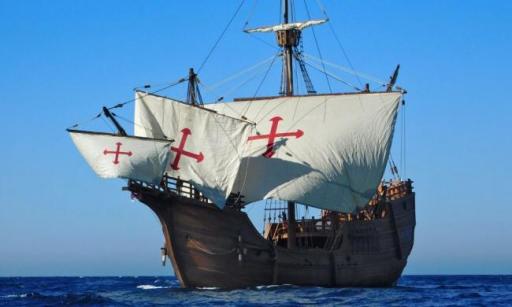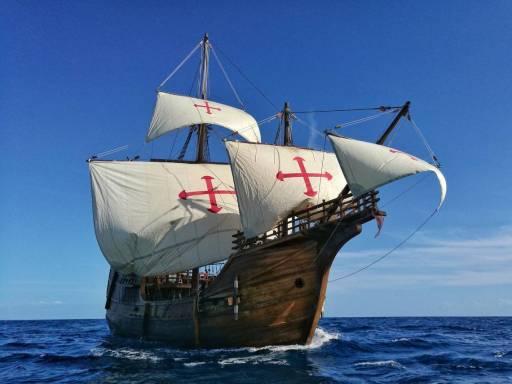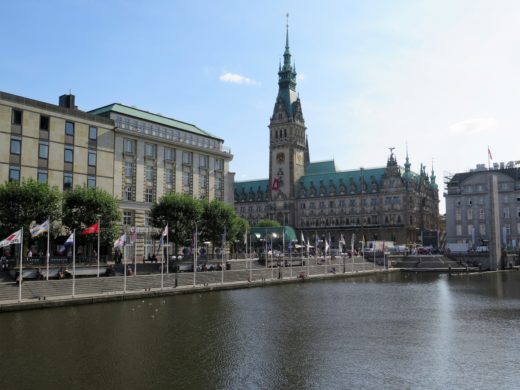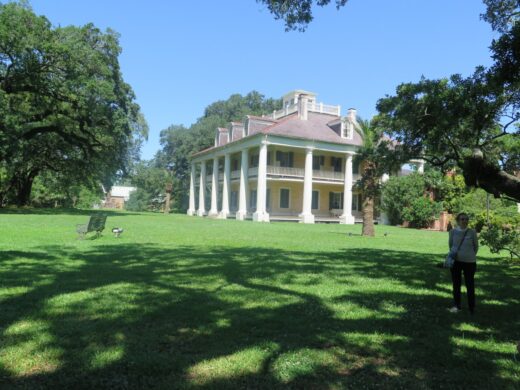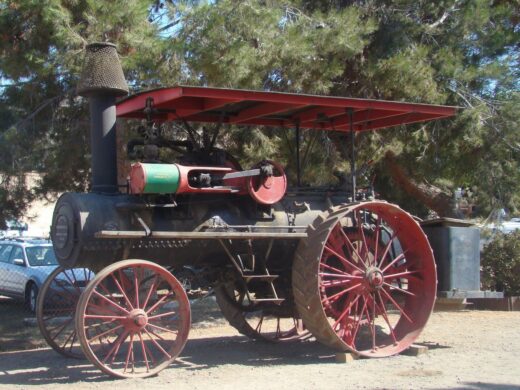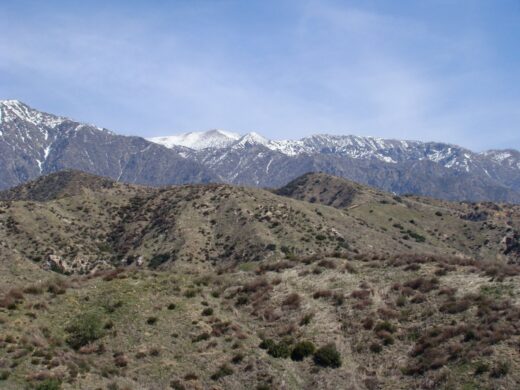Tall Ship Nao Santa Maria Visits Baton Rouge
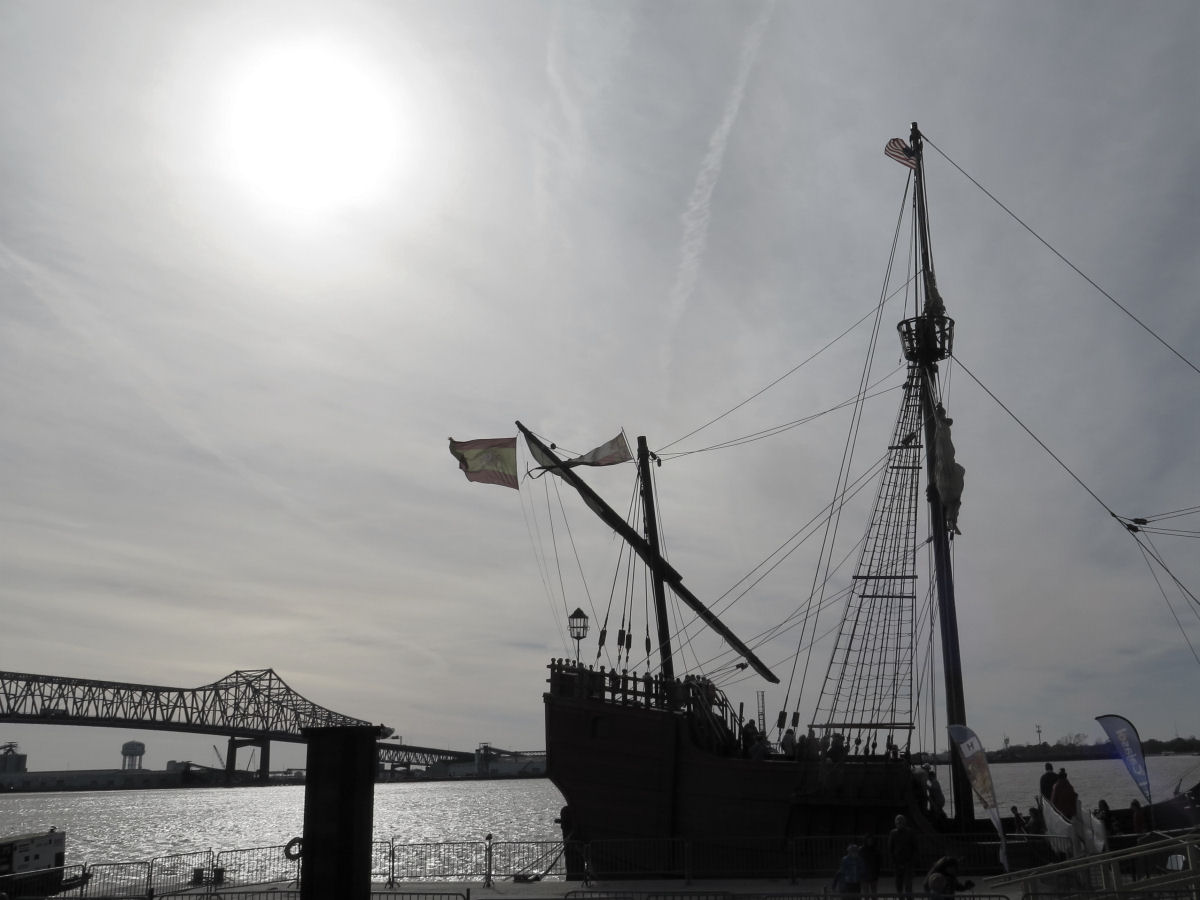
When the tall ship, Nao Santa Maria, came for a call at the Port of Baton Rouge, we went for a visit to the Mississippi River where it was docked. The Nao Santa Maria is a replica of the one that Christopher Columbus sailed on to America in 1492. What an adventure!
It was a chilly and blustery day in March, but the tall ship was leaving early the next morning so this was our last chance to see it. The Mississippi River was at a very high level, almost flood stage, so tug boats were needed to bring the small ship in to the port. It was leaving before dawn down the Mississippi River towards the Gulf of Mexico for the same reason. The port authority declared that this was the best time to depart because of fog, heavy currents and other river traffic anticipated the next day.
The sailors were Spanish, they answered questions about the tall ship. Living quarters were tight but slightly modernized, according to the crew. The ship included displays about life on the original ship. Here is a display of kitchen utensils similar to those used on the voyage in the 1400’s.
And we had a chance to wander throughout the deck and below taking in the ambiance of the ship.
The replica was built in Spain by the Nao Victora Foundation in 2017. Weighing about 200 tons and built of iroko and pine wood, it had three masts like the original ship and a bowsprit. It took 12 months to build the ship.
The ship was launched from Spain on March 15, 2018, visiting several ports in France and Spain. Then it started a voyage over the Atlantic in November of 2018. Operated by a 17 person crew of men and women, they used traditional navigational techniques to travel the sea. The tour includes stops in Baton Rouge, Louisiana, in February of 2019 and up the Atlantic Ocean, through the Great Lakes to Green Bay, Wisconsin, in July. Then the Santa Maria sails back to the Atlantic Ocean making various stops along the way including Oyster Bay, New York, in late October of 2019.
Christopher Columbus departed Huelva, Spain on August 3, 1492, on the Nao Santa Maria. The largest of the three ships, it was Columbus’ flagship and was manned by 40 sailors. The other ships along on the journey included the Pinta and the Nina. Columbus made land in America on October 12, 1492. Unfortunately, while sailing close to the Española Island close to the Haitain coast on Christmas day that year, the helmsman got distracted and hit reefs. The ship ran aground and wrecked. It is believed that Columbus ordered the ship’s timbers stripped from the wreck to build a fort on the location of the shipwreck. It is known as Bahía de Caracol and is the first Spanish settlement in America
